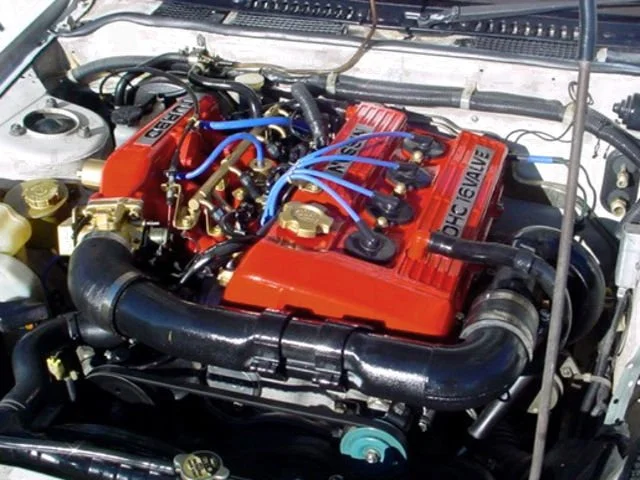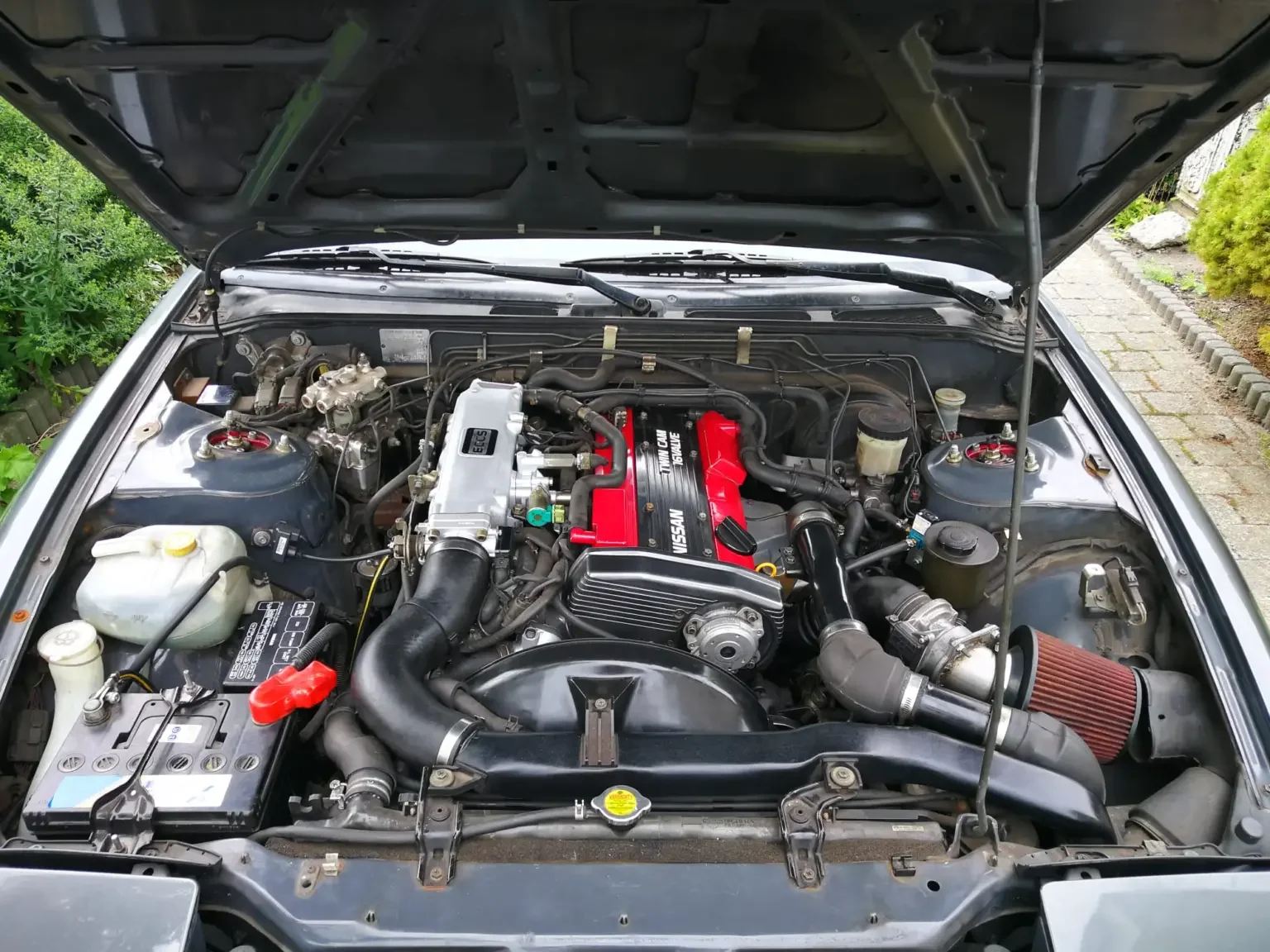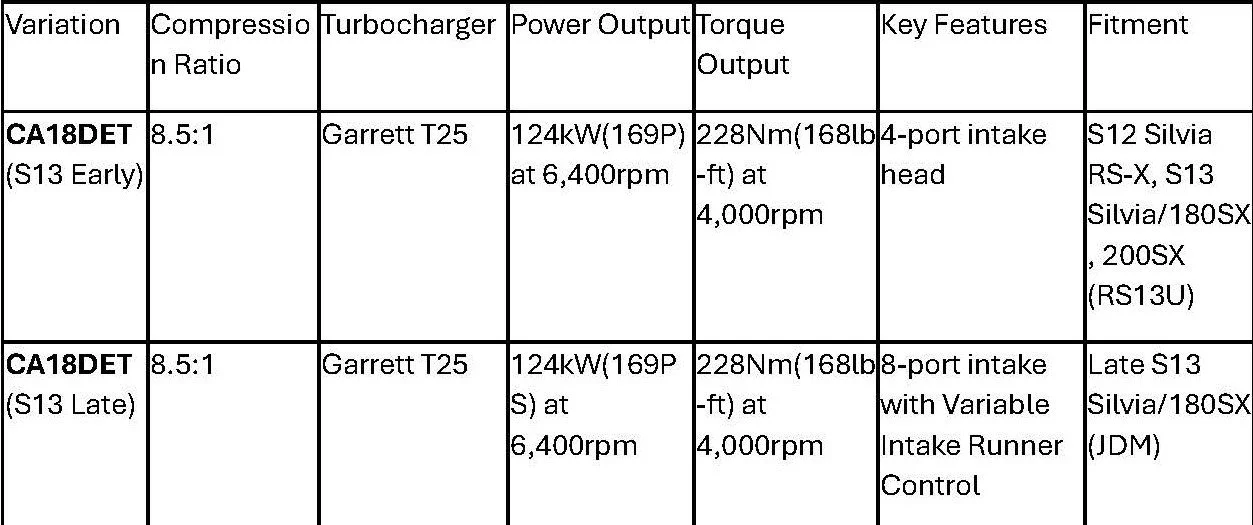Engine-pedia: NIssan’s awesome foursome: the FJ20ET, CA18DET & SR20DET
While the RB26’s racing heritage grabs the headlines, Nissan's legacy among a wider spread of car enthusiasts is largely built upon a series of potent, four-cylinder turbocharged engines. Three generations of iron-block DOHC four-cylinder engines (the FJ20ET, CA18DET, and SR20DET) became icons in the tuning world, and they became some of the most-swapped engines to easily repower classic cars.
For almost 20 glorious years, between 1983-2002, Nissan’s turbo four-cylinder engines were the most popular way to enjoy force-fed four-bangers. Toyota’s 3S-GTE, Mazda’s BP, and Subaru’s EJ20 all paled by comparison to the popularity for these Nissan engines.
The DOHC Pioneer: FJ20ET (1983–1987)
The FJ20 was a high-performance engine conceived for homologation in motorsports, specifically Group 4 and Group 5 racing, and was groundbreaking for Nissan, being one of the first mass-produced Japanese engines with a DOHC 16-valve cylinder head and electronic fuel injection at a time when most cars ran mechanical injection or carburettors.
Under the iconic red rocker cover is a donkey-strong 1990cc iron block with a high-flowing alloy cylinder head wearing four-valves per-cylinder. A bore and stroke of 89mm by 80mm and timing chain valvetrain helped the motorsports cred of the FJ, along with the Garrett T3 turbocharger, which was intercooled after 1984. Non-intercooled FJ20s featured 8.0:1 compression ratio, which was raised to 8.5:1 once the air-to-air intercooler was added.
A dry weight of 180kg means it is no lightweight compared to modern engines, but its strength was the most important facet for Nissan who were looking to take race track wins with the Skyline DR30 (RS-Turbo), and S12 Silvia/Gazelle RS-X. With 140kW (190hp) in non-intercooled spec and 151kW (205hp) intercooled the FJ20ET was a powerhouse for the early-to-mid-1980s, and it was soon being swapped into classic Datsuns, and this gained pace as aftermarket standalone ECUs hit the wider aftermarket in the late 80s.
The Compact Powerhouse: CA18DET (1987–1994)
The CA-series DOHC four-cylinder engines were introduced as a replacement for the FJ-series, designed to be more cost-effective and lighter powerplant. The CA18DET is revered for its robust cast iron block and responsiveness, but is often overlooked for the larger SR20DET sibling
Unlike the FJ20ET the CA18DET wasn’t intended to be a homologation engine, and so Nissan paid careful attention to weight and smoothness as they realised regular passenger car buyers wouldn’t enjoy the coarseness which made the FJ20ET beloved by enthusiasts. The iron block had an 83mm bore and 83.6mm stroke to be almost square, displacing 1809cc, while Nissan moved from the FJ’s timing chain to a quieter timing belt system.
With a Garrett T25 turbocharger, air-to-air intercooler and multi-port EFI the CA was one of the first modern turbo EFI engines from Japan’s halcyon turbo era, and it was soon found to be capable of holding far more power than the 170hp it was rated at. The CA18DET is also much lighter than the FJ20ET, coming in at 140kg.
The JDM Icon: SR20DET (1989–2002)
The SR20DET stands as Nissan's ultimate, and final, turbo DOHC four-cylinder from the iconic JDM turbo era. The SR20DET replaced the CA18DET as the core performance engine in the S-chassis line, becoming a globally iconic engine for drifting and tuning, but was also used in the all-wheel-drive Pulsar GTi-R among many other cars, going on to be swapped into countless FWD and RWD performance builds.
The SR20 is arguably an evolution of the FJ20 and CA18, though the single biggest change was a move to an alloy block after years of using heavy cast-iron. This allowed the 1998cc DOHC four-cylinder to weigh in at a light (for the time) 160kg. An 86mm bore and stroke offers square design for a torque-rich output, without sacrificing top-end power production or smoothness.
The SR20DET went through four main generations (S13, S14, S15, and non-RWD platforms), marked by cylinder head, turbocharger, and variable valve timing changes, all of which can be seen in the table below. The SR20DET's 685mm length, 610mm width and 615mm height makes it fairly compact and so it is a popular choice for engine swaps and conversions.
As the SR20 was used in transverse and longitudinal layouts there are both front-hump (RWD) and rear-hump (FWD) oil pan options, though oil control is an issue on front-hump sumps.
These three engines represent a spectacular, high-performance evolution within Nissan's history. The FJ20ET was the stout, high-revving, DOHC trailblazer. The CA18DET offered a compact, lightweight, and robust iron-block turbo solution. Finally, the SR20DET became the quintessential tuner engine, blending a lightweight aluminum block with advanced features like VVT and efficient ball-bearing turbos, cementing its place as an icon of Japanese performance.





